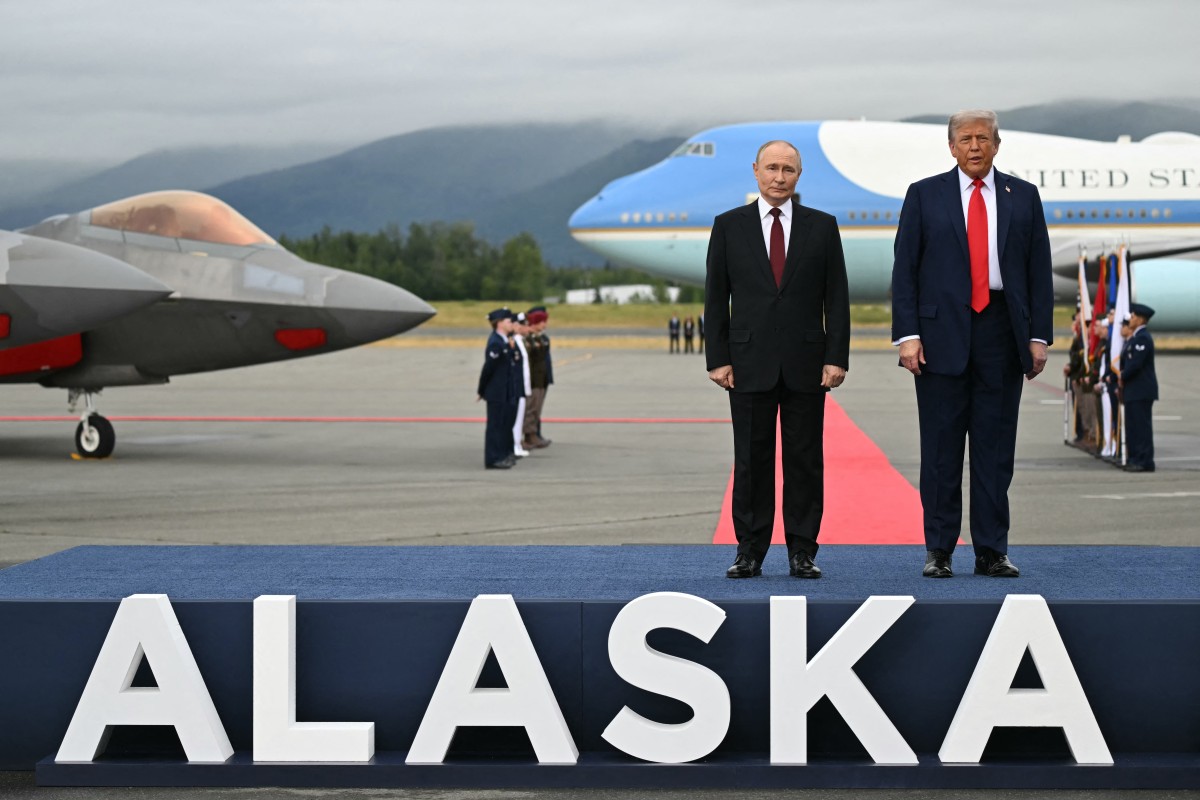Trump’s “Arctic Neglect”: Obsolete Radars & Strained Canada Ties Leave “Most Strategic” Alaska Exposed To Russia, China Threats?

Concerned about perceived threats from Russia and China, either singly or in unison, to the U.S. “homeland” through the Arctic, the Trump Administration may be placing greater emphasis on its Golden Dome initiative and renewing strategic interest in Greenland.
But, in the process, is the strategic importance of Alaska, America’s Arctic outpost, being overlooked?
A section of the American strategic elites seems to think so. It reminds us how Gen. Billy Mitchell had told the U.S. Congress way back in 1935 that “Alaska is the most important strategic place in the world. I believe that in the future, whoever holds Alaska will hold the world”.
In fact, last month during his confirmation meeting, General Kenneth Stephen Wilsbach, who assumed office as the 24th chief of staff of the Air Force on November 3, also admitted that “Alaska is the most strategic spot on Earth.”
After all, Alaska is the closest U.S. location to the center of the Northern Hemisphere and closer to many national capitals in the hemisphere than most points in the lower forty-eight states. This makes Alaska the ideal platform for the United States to project power militarily.
Further, sitting astride the Bering Strait chokepoint and the Great Circle Routes between North America and Asia, Alaska is critical to America’s economic and national security.
Alaska is a cornerstone of the U.S. missile defense. Most ground-based missile interceptors and major radar systems are based in the state, designed to counter potential threats originating over the Arctic, including ballistic missiles from potential adversaries.
However, strategic experts like Brig Gen Houston Cantwell, USAF (Retd.), The Senior Resident Fellow for Airpower Studies at the Mitchell Institute is now arguing that the extensive early warning systems the U.S. developed and operated during the Cold War to detect Soviet bomber aircraft far across the Arctic region have aged out and are no longer operable.
“More importantly, today’s threats are more varied, harder to detect, and less predictable than the weapons of the Cold War era. Today’s Arctic domain awareness (ADA) capabilities and capacity are woefully insufficient to the threat”, he argues.
It may be noted that 8 (Eight) nations have a presence in the Arctic: Canada, Denmark, Finland, Iceland, Norway, Sweden, the United States, and Russia. All have interests there, for both commerce and security.
The North American Arctic region comprises the northern approaches to the American homeland and includes sovereign U.S. territory in Alaska–home to significant U.S. defense infrastructure–and the sovereign territories of North Atlantic Treaty Organization (NATO) members, including Canada and the Kingdom of Denmark’s autonomous territory of Greenland.
Vital for U.S. homeland defense, the North American Arctic region hosts aerospace warning, aerospace control, and maritime warning capabilities for the binational U.S.-Canada North American Aerospace Defense Command (NORAD).
The North American Arctic region is also integral to the execution of Indo-Pacific operations, as the northern flank for projecting military force from the U.S. homeland to that region.

Geographically, the European Arctic region comprises the Arctic territory of NATO Allies Finland, Iceland, Norway, and Sweden, as well as Russia’s Kola Peninsula. Collaboration in this region among Unified Combatant Commands (CCMDs) and Arctic Allies is critical to the collective defense of NATO Allies and to U.S. homeland defense.
The accession of new NATO allies – Sweden and Finland – has made the Arctic serve as an avenue for power projection to Europe and is considered vital to the defense of Atlantic sea lines of communication between North America and Europe.
Historically, the Arctic has been a core strategic asset for Russia as nearly 53% of the Arctic coastline belongs to Russia, and the region generates around 20% of its GDP and 22% of its total exports.
The Russian Arctic Strategy, 2020, explains why the region’s largest state (Russia) should improve its infrastructure and deploy there. And Russian naval doctrine in 2022 raised the Arctic region to its highest priority, with President Vladimir Putin directing the construction of more than 475 military facilities across the region.
These Russian installations are supposedly protected by a multilayered network of sensors and defense systems to ensure they can generate military effects on U.S. mainland targets. Roughly two-thirds of the Russian Navy’s nuclear strike capabilities are believed to be harbored in the Barents Sea, allowing a direct and mostly undetectable path to North America and Europe.
Reportedly, Ivan Papanin, an icebreaker, began operations in the Arctic in 2025, signalling Moscow’s deepening military reach. These icebreakers are said to make way for other smaller ships and run for up to five years without refuelling.
Although China is not an Arctic nation, it is increasing its presence there. Branding itself a “Near-Arctic State”, China has outlined its Arctic plans in its 2018 Arctic White Paper. It is said to have invested heavily in Arctic research stations, icebreakers, and joint energy ventures with Russia.
It is also said that in 2024, China expanded its maritime military force projection capabilities. Its surface combatants were deployed to the Bering Sea for the fourth straight year and operated within cruise missile range of critical infrastructure throughout Alaska.
China has staged joint military operations in the region, which also took place off the coast of Alaska. In July 2024, there were reports that air crews from the North American Aerospace Defense Command (NORAD) intercepted two Chinese and two Russian military planes flying off Alaska’s coast.
These planes were not exactly in U.S. airspace and were not seen as a threat, but they were in an area called the Alaska Air Defense Identification Zone (ADIZ).
Reportedly, a joint bomber task force comprising two Russian Tu-95 strategic bombers and two Chinese H-6 strategic bombers penetrated the ADIZ. This was the first time China and Russia conducted a joint air patrol near Alaska and the first time the two countries launched aircraft from the same Russian airfield.

According to experts, the task force was also unique in that it demonstrated a close relationship between the two air forces that had not been demonstrated before.
It is against this background that Department of Defense (now Department of War)’s 2024 Arctic Strategy talks of evolving an “monitor-and-respond” approach that is “underpinned by robust intelligence collection capabilities, security cooperation with our regional Allies and partners, and the deterrent value of DoD’s ability to deploy the Joint Force globally at the time and place of our choosing”.
It also points out the need to accelerate the acquisition of advanced over-the-horizon radars and space-based capabilities.
And here experts are stressing the importance of improving “domain awareness” and enhancing “ ability to detect and respond with our Canadian allies to threats to the homeland”. In their opinion, Arctic domain awareness (ADA) capabilities and capacity are woefully insufficient to the threat from Russia and China.
As General Cantwell explains, NORAD, which was established in 1958, created a combined U.S.-Canada capability to jointly defend the continent. The command’s sensors were capable of detecting Soviet bombers armed with gravity bombs if they dared fly attack routes across Canadian and U.S. airspace. It developed a command-and-control network that shared information quickly enough to respond to inbound aircraft.
According to Gen. Glen VanHerck, then-commander of NORAD and U.S. Northern Command in March 2023, “For decades, NORAD has relied heavily on the North Warning System (NWS) arrayed along the Arctic coasts of Canada and Alaska to detect potential airborne threats to North America…. (but) It is clear that our competitors possess long-range strike capabilities that could be used to attack the United States and Canada from outside the detection range of legacy sensors.”
However, much of NORAD’s sensor and information-sharing networks are said to be no longer relevant to 21st-century threats. Russia and China spent the past three decades developing and fielding advanced weapons that are now capable of striking the U.S. homeland from afar.
Besides, a close binational relationship between the U.S. and Canada, a robust radar network, and the ability to share information at a speed relevant to military decision makers formed the basis of this successful North American air defense partnership in the past. But strained ties with Canada under the current Trump presidency are now a limiting factor.
All told, securing North America as a continent depends on a collaborative approach between the U.S. and Canada to share defense responsibilities and cooperate on intelligence gathering, rather than doing it alone.
- Questions and Answers
- Opinion
- Motivational and Inspiring Story
- Technology
- Live and Let live
- Focus
- Geopolitics
- Military-Arms/Equipment
- Security
- Economy
- Beasts of Nations
- Machine Tools-The “Mother Industry”
- Art
- Causes
- Crafts
- Dance
- Drinks
- Film/Movie
- Fitness
- Food
- Games
- Gardening
- Health
- Home
- Literature
- Music
- Networking
- Other
- Party
- Religion
- Shopping
- Sports
- Theater
- Health and Wellness
- News
- Culture

